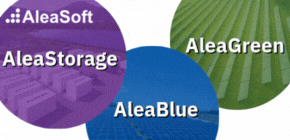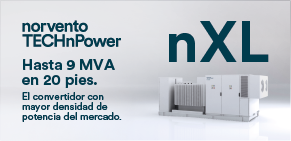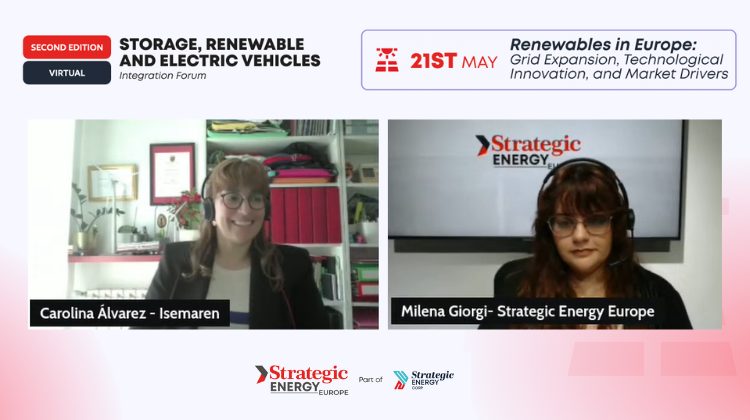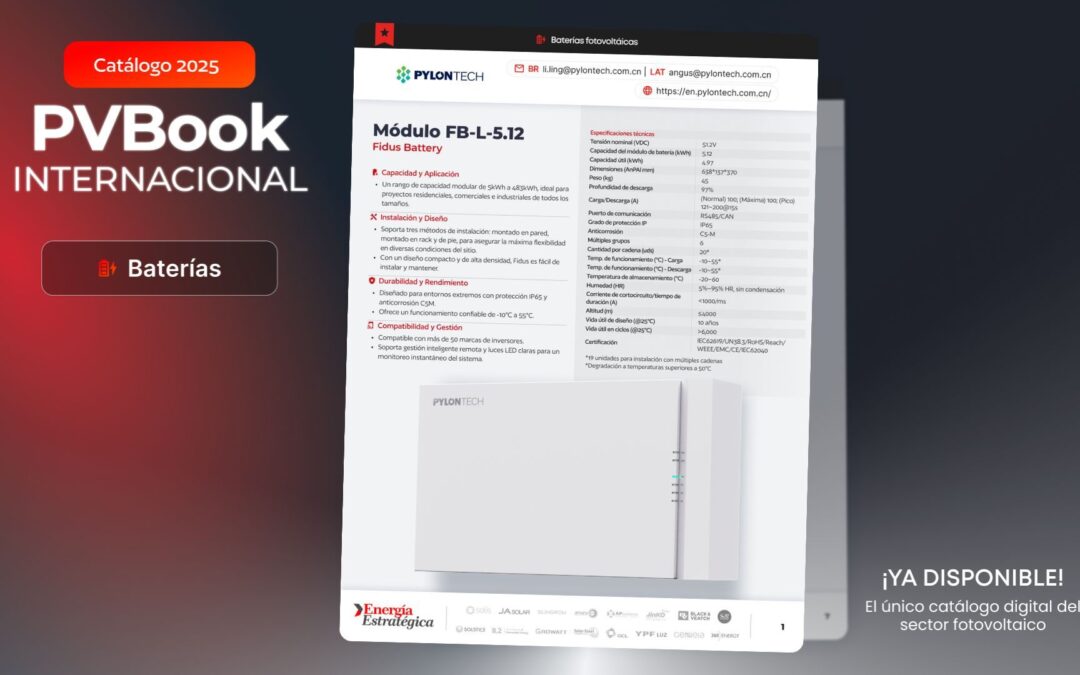One month on from the blackout that hit the Iberian Peninsula —with no clear official explanation yet provided— the Storage, Renewable and Electric Vehicles Integration Forum, co-organised with Mobility Portal Europe and Strategic Energy Europe, offered a space for technical analysis.
Strategic Energy Corp, in partnership with Future Energy Summit (FES), hosts major renewable energy gatherings, as FES stands as the leading platform for renewable energy dialogue in Spanish-speaking countries. Notably, on 24 June, the third edition of FES Iberia 2025 will take place at Colegio Caminos (Auditorio Betancourt, C. de Almagro, 42, Chamberí) in Madrid. (Relive the previous edition here).
The meeting will feature companies such as Iberdrola, Nextracker, Engie, Grenergy, Statkraft, Acciona Energía, Red Eléctrica, and EDP Renovables, alongside key representatives from Spain’s regional governments and Latin America. Key discussion topics will include solar and wind energy, energy storage, green hydrogen, distributed generation, PPAs, auctions, and new projects.
During the virtual forum experts agreed that current grid regulation frameworks are no longer sufficient for an increasingly decentralised and dynamic power matrix.
Within this context, the role of battery storage and its efficient integration into the grid took centre stage. Sector specialists concurred that it is no longer enough to install renewable megawatts —the key now lies in ensuring coordinated, stable, and well-regulated operation.
Carolina Álvarez Aláez, Partner & CCO at Isemaren, emphasised that the company’s current focus is on designing grid regulation and control solutions tailored to the evolving technical demands of the sector.
“The industry can no longer operate without prioritising grid control. It is now the neural centre of renewable storage,” the executive warned.
This view is grounded in current data: in Spain, interest in energy storage has grown significantly. According to Red Eléctrica, there are now nearly 22,000 MW of capacity seeking grid connection, of which 9.5 GW already hold access and connection permits.
Speaking to Strategic Energy Europe, Álvarez explained that Isemaren’s flagship product in this area is its Energy Management System (EMS), designed not only for battery hybridisation, but for multiple technologies.
This EMS is part of the Open-PPC-X1 solution, certified under the EU 2016/631 standard and compatible with any inverter.
It includes predictive control, dynamic regulation, HMI-SCADA interface, certified models in PSS/E and DIgSILENT, and meets advanced cybersecurity requirements. Its architecture is modular, flexible and non-proprietary, designed for solar, wind, and battery plants alike.
The Open-PPC-X1 acts as the operational brain of the plant: it manages energy injection, coordinates inverters and auxiliary systems, and enables delivery of critical grid services —which are increasingly demanded by regulators.
According to Álvarez, the system already incorporates functions such as voltage control in line with PO74, which is soon to be approved by Red Eléctrica de España.
During the panel, other experts stressed that compliance with these new requirements will not only become mandatory, but also represent a competitive advantage for those who integrate them early in the design process.
The discussion also touched on the need to move towards business models that include additional revenue streams from capacity markets —still pending regulation in parts of the continent.
Looking ahead, Álvarez pointed out that many companies are already investing in advanced firmware to anticipate future regulatory scenarios, enabling them to update operational logic, trigger automated responses to grid events, and adapt systems to new rules without altering the hardware.
“It’s no longer just about maximising generated energy,” she reflected, adding: “There are players who, for some time now, have been focusing on control capabilities, forecasting, and participating in energy markets.”
Beyond regulatory compliance, Isemaren is committed to an integration architecture built with high-quality European components, following a philosophy of technological non-obsolescence. Its systems are designed with a Mean Time Between Failures (MTBF) of 40 years and meet the requirements of the NIS2 cybersecurity directive.
This approach enables the company to design tailored solutions for complex configurations that integrate solar, wind, batteries, diesel, or other energy sources. “Our solution is not a proprietary product —it’s a system that integrates components with software developed in-house,” Álvarez clarified.
The forum also explored the increasing application of digital twins and hardware-in-the-loop simulation environments to predict the real-world behaviour of hybrid plants before commissioning.
Isemaren is already using this technology to optimise system design in projects requiring services such as black start, spinning reserve, or oscillation damping.
“The challenge is to integrate and operate safely for 40 years, while adapting to every regulation that may arise over time,” Álvarez Aláez concluded.






























